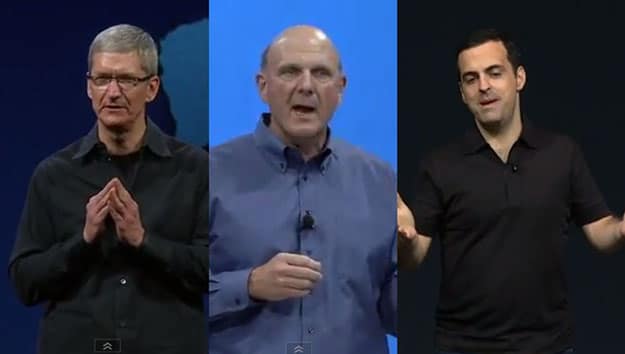Remember the glory days of Steve Jobs’ return to Apple and his hypnotic quality to charm and thrill an audience with Apple’s latest wonder gadgets? Back then, the innovations that Apple led the industry with were nothing short of magical. Say what you like about Jobs, but he was quite the showman. The other big tech giants likewise came with their own innovations, and for a period of time, watching all their keynotes could be just as enthralling as a Hollywood film or other piece of quality staged entertainment.
Those days are now behind us, or at least until the next wave of true innovation comes to fruition. The announcements that are made these days at keynotes are of the evolutionary kind; devices have faster specs, better displays, and better cameras than the previous model. Sometimes the physical design will change a little, with the trend in smartphone designs in particular being larger form factors (the iPhone 5 and Samsung Galaxy S4 being recent examples of this). But not much that gets announced at keynotes these days will ever match the frenzied arrival of devices such as the iPhone or iPad. The original iPhone keynote specifically has to be one of the best executed product announcements in tech history.
That’s not to say that new models and riffs on current models aren’t a good thing. Refining what works to be better than previous models is mandatory for tech. With this in mind, it’s unfair for the pundits to be “disappointed” with the latest iPhone, or the latest Samsung Galaxy phone, or the release of Nokia’s Windows Phones because they don’t have the “wow” factor. These types of devices have now matured, and like the PC surge in previous decades, mobile devices have now reached a point where there may not be much left to do other than to constantly refine and improve.
I have an iPhone 5, and I can tell you that in a whole lot of little ways it’s vastly superior to the iPhone 4 I had before it, despite the fact there is nothing drastically different to the way it works. I find it frustrating to use a “4” now because it is nowhere near as responsive and functional as the “5.” This is actually very important for any end user. It may not generate headlines, but it makes a huge difference when using the device on a daily basis.
We’ve reached a point where the keynotes delivered by tech companies are becoming less interesting, and mostly irrelevant for day-to-day users. To paraphrase George Lucas, releasing a new model that is “faster and more intense” than the previous version is welcome, but perhaps not worthy of a major announcement. Or perhaps the tech media shouldn’t treat them as major announcements and blow them out of proportion.
It can be easy to take for granted the devices we have today, and to write off any minor updates as “ho-hum.” Perhaps we should remember the days when we only had landlines and analogue TV. A smartphone or a tablet back then would have been the stuff of magic!
Do You Agree? Are Tech Keynotes Becoming Irrelevant?
Image Credits: [The Verge] [Design-Laorosa]

COMMENTS